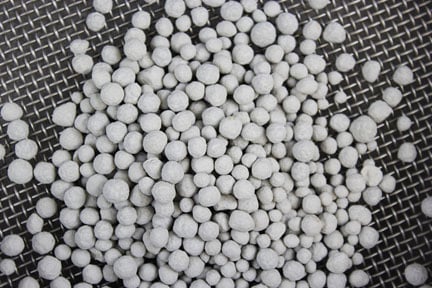Agglomeration is frequently recognized as a process step that produces more marketable end products, such as fertilizers, pharmaceuticals, and food powders, among others. One overlooked application of agglomeration, however, is the treatment of materials headed to landfill. Before being disposed of, or taken to landfills, many waste materials are agglomerated to make them safer, easier to transport, and more suitable for landfills.
Why Agglomerate Materials for Landfill?
Landfills are one of the most common methods of waste disposal, and while we typically think of them as housing discarded food scraps, paper, and other wastes, they are also frequently used to dispose of waste materials such as process by-products and the like. These materials come in all sorts of forms- from dispersible dusts and powders, to difficult to handle sludges.
While landfilling is an effective method for disposing of waste materials, this method is not without its problems. These process by-products can contain hazardous components that must be carefully disposed of to avoid any risk of contaminating surrounding areas, often even requiring processing prior to being landfilled. The disposal of waste materials in landfills can pose problems in other ways too. This is commonly seen with materials that are in powder form, or a form that results in excessive dust or is prone to being picked up by wind. Not only is this type of material difficult to transport to landfill without significant material loss, but it can also easily become windblown at the landfill, finding its way into unintended nearby areas. Sludges can also be problematic to landfill, simply for the sake that they are expensive to transport due to their high water content, and their hazards due to the potential to leach into ground water.
How Agglomeration Helps
Depending on the material and its form, agglomeration can be used to make the waste easier to transport, safer, or less likely to be carried away in the wind, in a process often referred to as conditioning. This process de-dusts materials, making them less dispersible in air, and thus less likely to inadvertently leave a landfill and contaminate surrounding areas. Conditioning is also valuable for sludge-like materials, but for different reasons. Conditioning a sludge can turn it into a dry, granular form – locking up potentially hazardous materials, and making it more cost effective to transport. Both with dusty materials and sludges, conditioning makes transportation, storage, and disposal of material easier.
Avoiding Landfills Through Agglomeration
While agglomeration is frequently used as a means for processing waste materials before sending them to landfill, it is also used to recycle material and eliminate the need for a landfill altogether. This may be even more common than simply treating wastes, and is possible because, through agglomeration methods, waste materials can be turned into value-added products or ingredients for use in the production of other materials and services.
Fly Ash
One example of this is the agglomeration of fly ash. Fly ash, a highly dispersible powder, is a by-product that comes from coal-fired power plants. When fly ash is conditioned or pelletized using paddle mixers or disc pelletizers, however, it can be used as a value-added product and incorporated into other applications. Perhaps the most prominent use of recycled and agglomerated fly ash is in the construction industry, where fly ash is used as an additive in the concrete making process. The addition of fly ash to concrete reduces the need for water, improves concrete workability, and reduces material segregation. Additionally, dyes can be added during the fly ash agglomeration process to color concrete, offering a premium product.
Fly ash is one of the most prominent examples of how agglomeration can eliminate landfill requirements, but there are many other examples of waste materials that can be agglomerated and used as value-added products as well. Some of these materials include milling wastes, chemical waste, plastic waste, agricultural waste, biomass, tailings, and dust waste for various procedures. These types of waste materials are often only considered waste because they are in a form that is not usable in other processes without additional processing. Agglomeration through conditioning or pelletization fixes these problems and allows materials to be recycled into the metal, paper, and construction industries, among others.
FGD Sludge
Another prominent example of processing a previously landfill-bound material into a value-added product is FGD sludge, or Flue Gas Desulfurization sludge. FGD sludge is a by-product created at fossil fuel-burning power plants, when sulfur dioxide is ‘scrubbed’ out of the exhaust gases before they enter the atmosphere. The resulting product, it was soon found, could be used as a pure, synthetic form of gypsum. Synthetic gypsum, or syn gyp, can be used interchangeably with natural gypsum resources in many applications and is also 100% recyclable. This means, that not only can this material be continually reused without material degradation, but it also reduces our need to mine natural gypsum, and keeps a process by-product from going to landfill.
Recovering valuable material and reducing the total amount of material that needs to be placed in landfills is one of the most widely acclaimed applications of agglomeration because of the benefits it provides to the waste and resource management industries. Agglomeration or conditioning of material for landfill also makes material handling and disposal easier and safer, creating an application that is very versatile overall.
FEECO has been an agglomeration leader since 1951. Whether you’re looking to agglomerate a material prior to landfill, or avoid landfilling all-together, FEECO is ready to help. For more information on our waste-to-value capabilities, contact us today!



